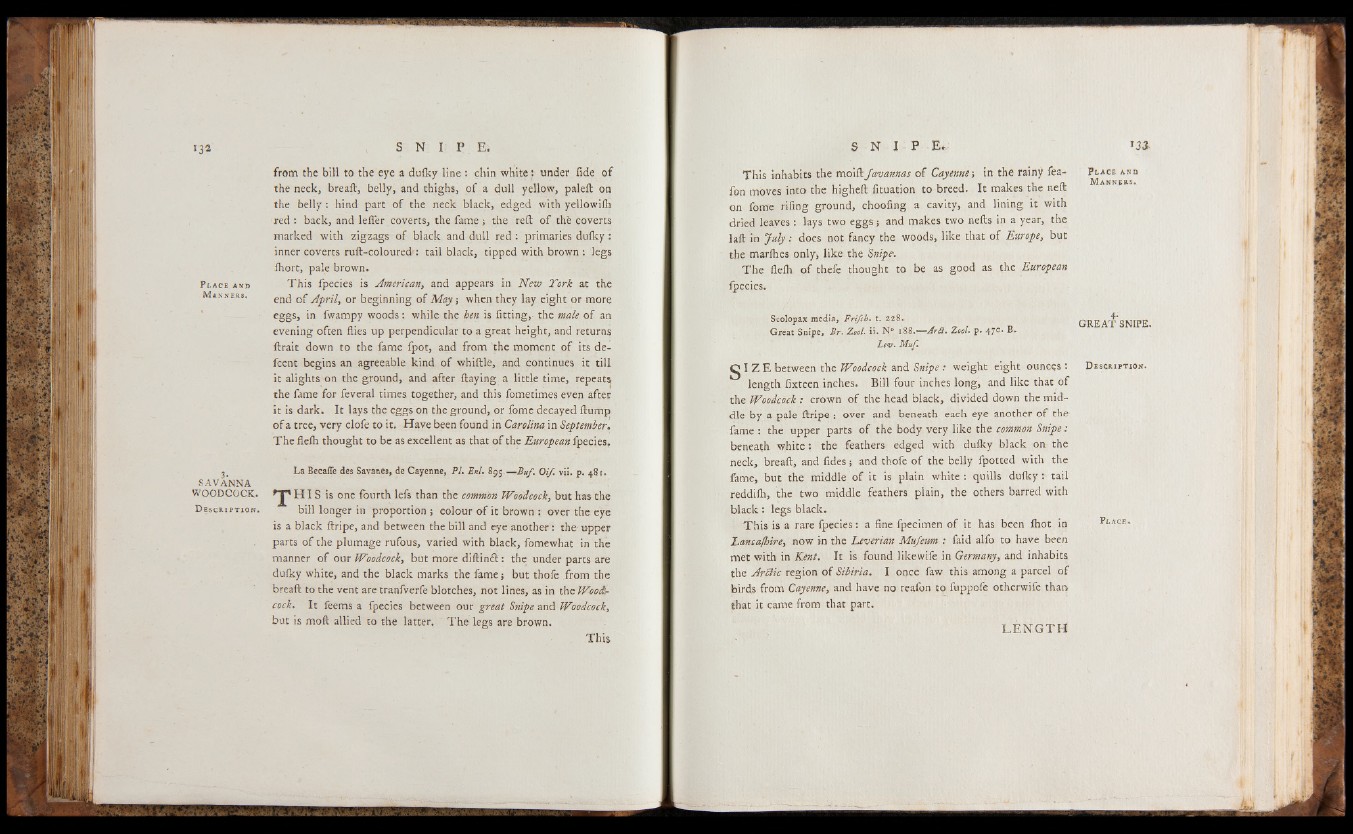
Place and
Manners.
from the bill to the eye a dufky line : chin white : under fide of
the neck, breaft, belly, and thighs, of a dull yellow, paleft on
the belly : hind part of the neck black, edged with yellowilh
red : back, and leffer coverts, the fame ; the reft of thfe coverts
marked with zigzags of black and dull red : primaries dufky :
inner coverts ruft-coloured : tail black, tipped with brown : legs
fhort, pale brown.
This fpecies is American, and appears in New Tork at the
end of April, or beginning of May; when they lay eight or more
eggs, in fwampy woods: while the hen is fitting,- the male of an
evening often flies up perpendicular to a great height, and returns
ftrait down to the fame fpot, and from the moment of its de-
fcent begins an agreeable kind of whiftle, and continues it till
it alights on the ground, and after flaying a little time, repeats
the fame for feveral times together, and this fometimes even after
it is dark. It lays the eggs on the ground, or fome decayed flump
of a tree, very clofe to it. Have been found in Carolina in September.
The fielh thought to be as excellent as that of the European fpecies,
3* -
SAVANNA
WOODCOCK.
D escription.
La Becaffe des Sarar.es, de Cayenne, PI. Enl. 895__Buf. Oif. vii. p. 481.
f jp H I S is one fourth lefs than the common Woodcock, but has the
bill longer in proportion ; colour of it brown : over the eye
is a black ftripe, and between the bill and eye another: the- upper
parts of the plumage rufous, varied with black, fomewhat in the
manner of our Woodcock, but more diftindl: the under parts are
dufky white, and the black marks the fame; but thofe from the
breaft to the vent are tranfverfe blotches, not lines, as in the Woodcock.
It feems a fpecies between our great Snipe and Woodcock,
but is moft allied to the latter. The legs are brown.
This
This inhabits the moiftJavannas of Cayenne 5 in the rainy fea-
fon moves into the higheft fituation to breed. It makes the neft
on fome rifing ground, choofing a cavity, and lining it with
dried leaves : lays two eggs; and makes two nefts in a year, the
laft in July : does not fancy the woods, like that of Europe, but
the marfhes only, like the Snipe.
The fielh of thefe thought to be as good as the European
fpecies.
Scolopax media, Frifch. t. 228.
Great Snipe, Br. Zool. ii* N° 18.8.— Ar£i, Z00L p. 47°* ^
Lev. Muf.
Q I Z E between the Woodcock and Snipe : weight eight ounces :
length fixteen inches. Bill four inches long, and like that of
the Woodcock : crown of the head black, divided down the middle
by a pale ftripe : over and beneath each eye another o f the
fame : the upper parts of the body very like the common Snipe:
beneath white: the feathers edged with dufky black on, the
neck, breaft, and fides; and thofe of the belly fpotted with the
fame, but the middle of it is plain white: quills dufky:' tail
reddifh, the two middle feathers plain, the others barred with
black: legs black.
This is a rare fpecies: a fine fpecimen of it has been Ihot in
Lancafhire, now in the Leverian Mufeum : faid alfo to have been
met with in Kent. It is found likewile in Germany, and inhabits
the Arctic region of Siliria. I once faw this among a parcel of
birds from Cayenne, and have no realbn to fuppofe otherwife than,
that it came from that part.
Place and
Manners.
4*
GREAT SNIPE.
Description.
Place..
L E N G T H